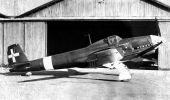
breda Ba.201773 viewsSingle-seat dive bomber. The Ba.201 was a clean low-wing monoplane with an inverted gull wing. It was highly praised by test pilots, except for a disappointing maximum speed. But all available Daimler-Benz DB 601 engines were to be used for fighters, and the Ba.201 was abandoned. Two built. Oct 02, 2004
|
|
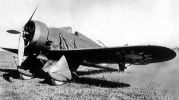
Breda Ba.27686 viewsLow-wing fighter monoplane, with struts and bracing wires, an open cockpit and fixed landing gear. The original mixed construction version was unsatisfactory. It was completely redesigned with an all-metal construction. It was still rejected by the Italian air force, but 11 were built for China. Oct 02, 2004
|
|
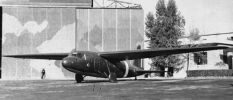
AL12P1097 viewsOct 02, 2004
|
|
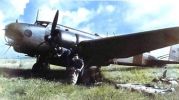
FIAT BR.20 "Cicogna"561 viewsThe Fiat BR.20 Cicogna was the standard Italian bomber of the mid to late 1930's, but it proved to be already obsolete during the French campaign during Italy's entry into World War Two. This bomber was first proposed by Celestino Rosatelli , who envisioned a standardized bomber, in 1934. The two engine BR.20 was first flown on 10 February 1936 at Torino Alitalia and the first 20 units were delivered on 26 November 1937.
Although the aircraft looked realtively sleek and modern, it was already outclassed by other competitors. Nevertheless, a total of 234 BR.20's, 279 BR.20M's and 15 BR.20Bis were built. The BR.20M (Modified) and the BR.20Bis were unique to the original in the change of nose section and engines. These aircrafts were operated in Malta, Battle of Britain, Yugoslavia and the Balkans.
Oct 02, 2004
|
|
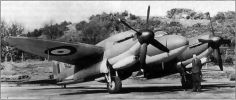
vickersf741421 viewsSep 24, 2004
|
|
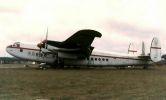
Avro 685 York562 viewsA transport development of the Lancaster, with a bigger fuselage of rectangular cross-section and an additional tailfin. Production during WWII was limited because it was agreed that the US would supply transport aircraft. Sep 24, 2004
|
|
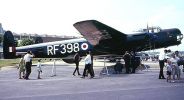
Avro Lincoln422 viewsHeavy bomber developed from the Lancaster, and initially known as the Lancaster B Mk.IV. The Lincoln, bigger and with a longer range, was developed for a British campaign in the far East, but was never used in this role because of the end of WWII. It compared unfavourably with more modern designs like the B-29, but was kept in service until 1963 and saw in combat over Kenya and Malaya. One was shot down on its way to Berlin in 1957. Sep 24, 2004
|
|

Avro Lancaster394 viewsThe Lancaster bomber was one of the most famous bombers of World War 2 its bomb load exceeding that of any other aircraft in full-scale production at the time. Only two examples are flying at the present time although there are several static examples in existence. With four Rolls-Royce Merlin engines giving a top speed of 287 mph and a range of 1,660 miles, the Lancaster’s’ seven-man crew could provide a knockout punch with a typical load of 18,000 pounds of high explosive over the target. Along with the Handley Page Halifax, the Lancaster gave the UK the offensive striking power needed to penetrate German air defenses during World War II. Sep 24, 2004
|
|
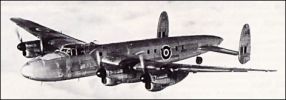
Avro Lancastrian507 viewsIn 1944 Avros, at their Waddington factory, began a conversion of the Lancaster, to follow that, which had been made by Victory Aircraft in Canada. This was to make an aircraft for long-range navigational flights. The nose and tail sections were modified and extra fuel tanks added. The new machine was named the Avro Lancastrian; and was delivered to The Empire Air Navigation School at RAF Shawbury.The first plane was called Aries, and it set off on the first, circumnavigation of the world. QANTAS airline of Australia used Lancastrians, on their London to Australia flights. BSAA also used Lancastrians on regular flights to South America; as did Flota Aerea Mercante Argentina. The Canadian Authorities had established a regular route from Canada toBritain earlier. This plane had a range of 4,100 miles with a 7,500 lb payload.Sep 24, 2004
|
|

Avro Lincoln402 viewsHeavy bomber developed from the Lancaster, and initially known as the Lancaster B Mk.IV. The Lincoln, bigger and with a longer range, was developed for a British campaign in the far East, but was never used in this role because of the end of WWII. It compared unfavourably with more modern designs like the B-29, but was kept in service until 1963 and saw in combat over Kenya and Malaya. One was shot down on its way to Berlin in 1957. Sep 24, 2004
|
|
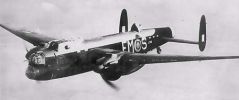
Avro Manchester473 viewsThe Avro Manchester had a relatively brief service career, from November 1940 to June 1942, largely because of problems associated by the unreliability and eventual lack of power shown by the Rolls-Royce Vulture I engines with which it was fitted. The bomber could, however, maintain height on one engine, and in one case an aircraft flew 600 miles from Berlin to its base in England after having had an engine knocked out by gunfire in addition to other extensive damage. In addition to a 10,350 pound bomb load in cavernous bomb-bay nearly half the length of the fuselage, the armament consisted of eight .303-inch machine-guns: two in the nose, two in a dorsal turret, and four in a turret in the tail.
Though unsuccessful the Avro Manchester design demonstrated sufficient promise to warrant further modification.
Sep 24, 2004
|
|
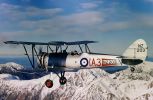
AVRO 626418 viewsThe Avro 626 was developed in 1930 from the Tutor with an optional third seat in a rear cockpit with provision for a gun ring. Numerous sales were made to foreign air forces up to 1939, some of which survived in second-line service until 1945. At least two 626s survived in Belgium's Aeronautique Militaire until 1940.
Avro Prefect: The RAF bought seven Tutor/Avro 626 hybrids, two-seaters with Lynx IVC engines, to Specification 32/34 as navigation trainers for service at School of Air Navigation, Andover. Delivered in 1935, they operated during WWII on miscellaneous duties. Four Lynx-engined Prefects supplied to RNZAF in 1935 were three-seaters; one survived to 1945. Sep 24, 2004
|
|
|
|